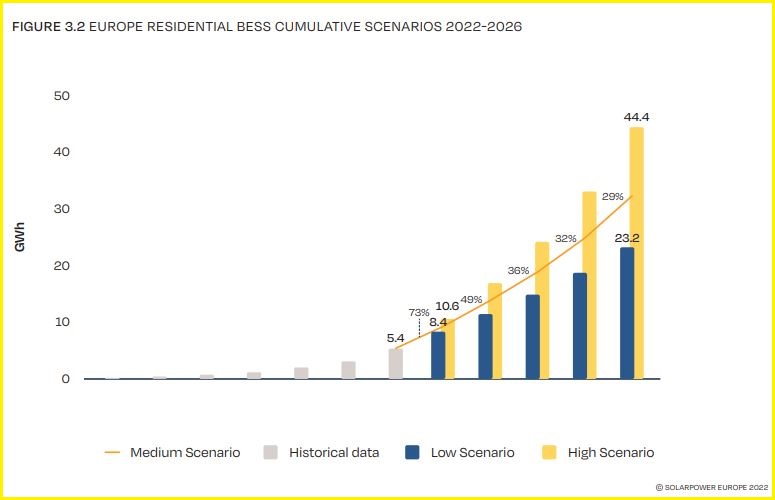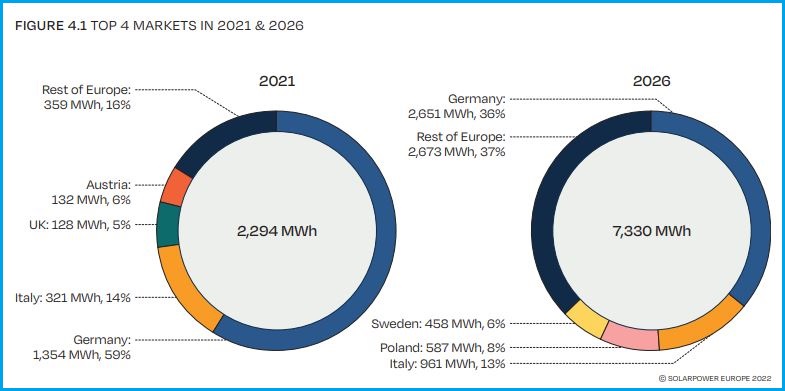
Photo: Sonnen/SolarPower Europe
More than one million European homes will welcome the New Year with batteries for their solar power plants. It is an increase of over 50% since the end of 2021, significantly higher than what was forecasted.
SolarPower Europe estimates that the capacity of residential battery energy storage (R-BESS) units will reach 9.3 GWh by the end of 2022, while the expected capacity by 2026 could climb to as high as 44.4 GWh, according to data from its European Market Outlook For Residential Battery Storage 2022–2026.
The installations are driven by high electricity prices and the great synergy with solar photovoltaic installations, as it extends the usage and application of solar power. The average attachment rate between BESS and PV has grown from 23% in 2020 to 27% in 2021.
Germany, the biggest residential storage market, has the highest attachment rate between batteries and solar panels, 80%, making R-BESS almost a standard part of solar systems.
The business case for home storage has improved in 2022

In 2021, with 2.3 GWh installed over the course of the year, the European residential battery market grew 107% from 2020, resulting in a total operating fleet of more than 650,000 units with a cumulative capacity of 5.4 GWh.
The political and economic landscape in 2022, characterized by even higher electricity prices than in 2021 and energy security concerns related to the war in Ukraine, has improved the business case for home storage.
“We expect the residential BESS market to maintain a very high growth path: after the market reached 1 GWh in 2020 and 2.3 GWh in 2021, our medium scenario expects 3.9 GWh to be installed in 2022, up 71% from the year before. Over the course of 2022, the remarkable threshold of one million homes with solar and storage has been surpassed,” reads the report.
Europe’s residential prosumers could operate a battery fleet of 44.4 GWh by the end of 2026
Positive market conditions and supportive frameworks expected in more European countries in the mid-term will increase the continent’s cumulative capacity to 9.3 GWh by the end of 2022 and reach 32.2 GWh in 2026 under their medium scenario, with annual growth rates in the range of 30% or above for all the intervening years.
Under optimal conditions, Europe’s residential prosumers could operate a battery fleet as large as 44.4 GWh by the end of 2026, compared to 23.2 GWh in the most pessimistic scenario, according to the report.
According to projections, the biggest markets for home batteries in 2022 will be Germany, Italy, the United Kingdom, and Austria, in that order, after the last two changed places.
Germany to retain highest ranking

The report analyzes the specific features of the four largest European markets.
SolarPower Europe estimates that Germany, which was responsible for 59% of all installations in 2021, will keep the top position next year.
By 2026, however, Poland and Sweden are expected to replace Austria and the UK.
According to Walburga Hemetsberger, CEO of SolarPower Europe, solar and storage are the perfect pair. Batteries supply the power of the sun around the clock and reduce electricity bills, she added.









Be the first one to comment on this article.